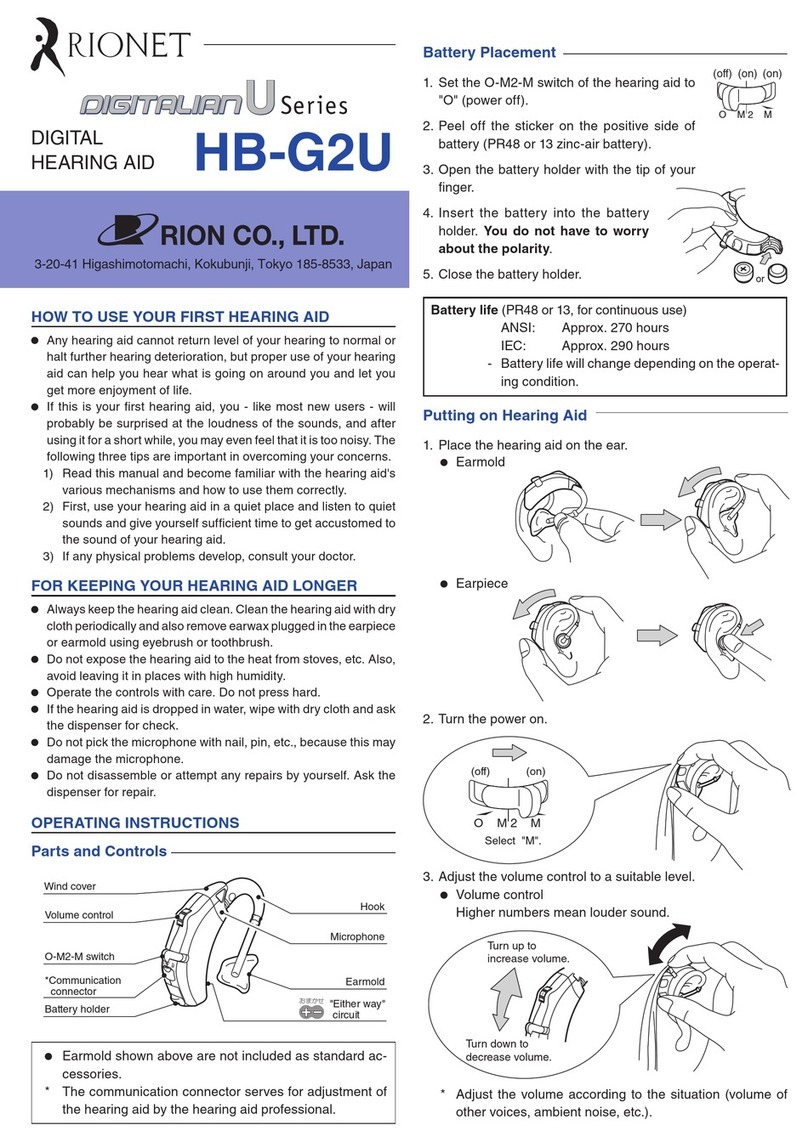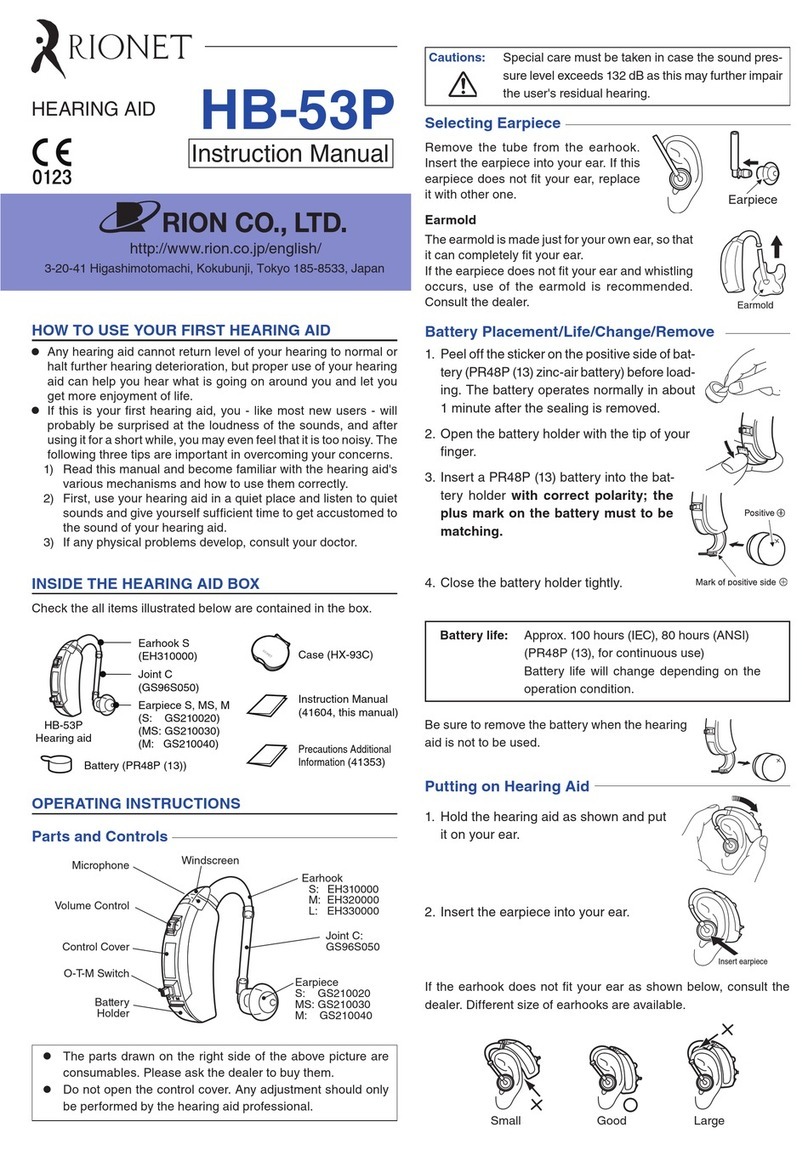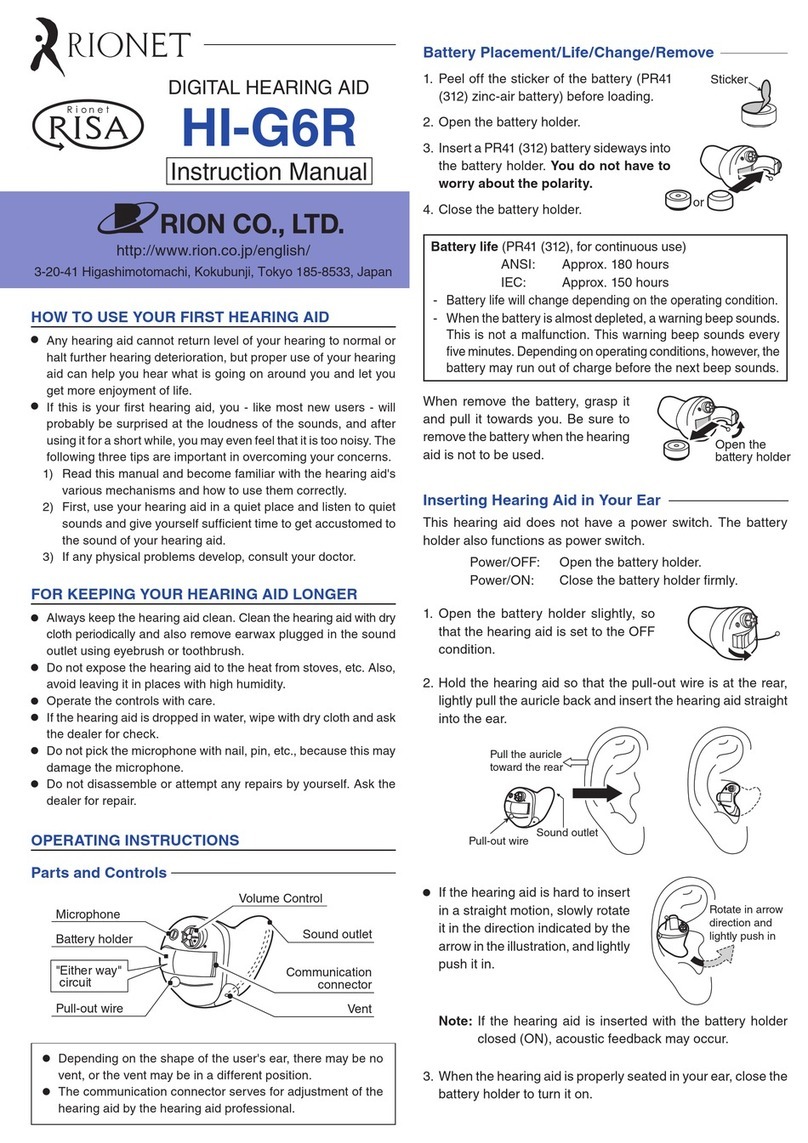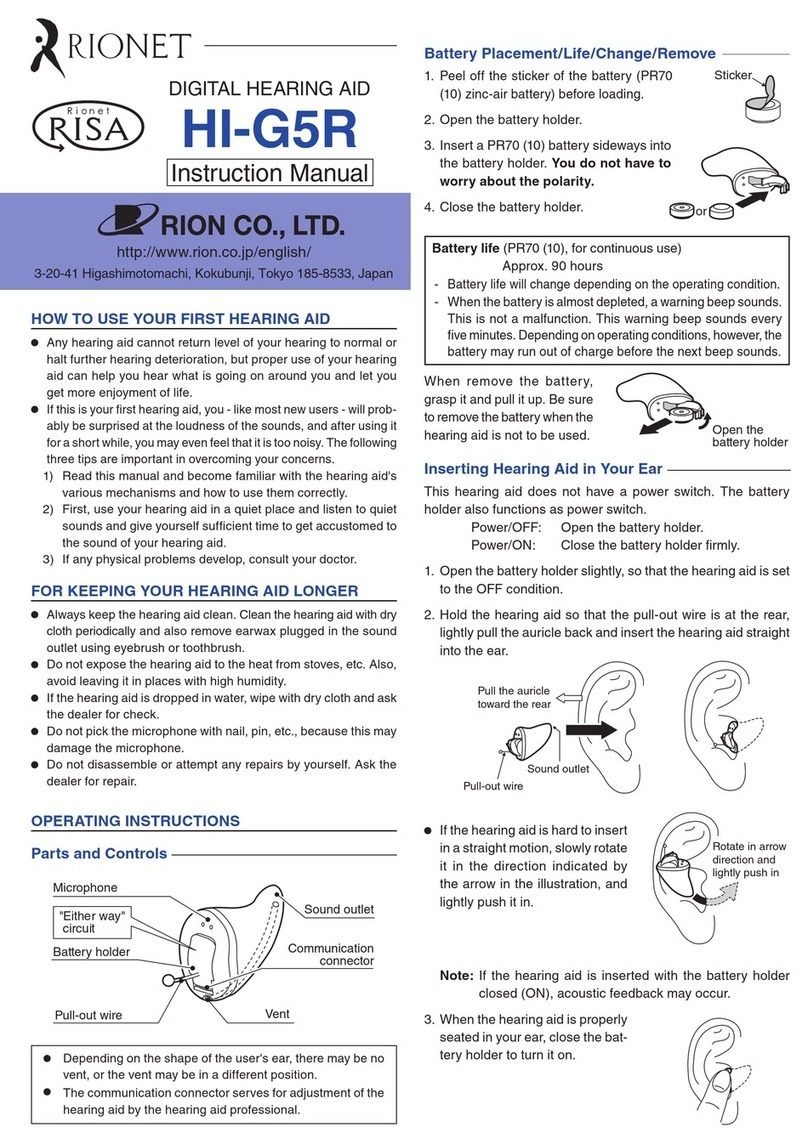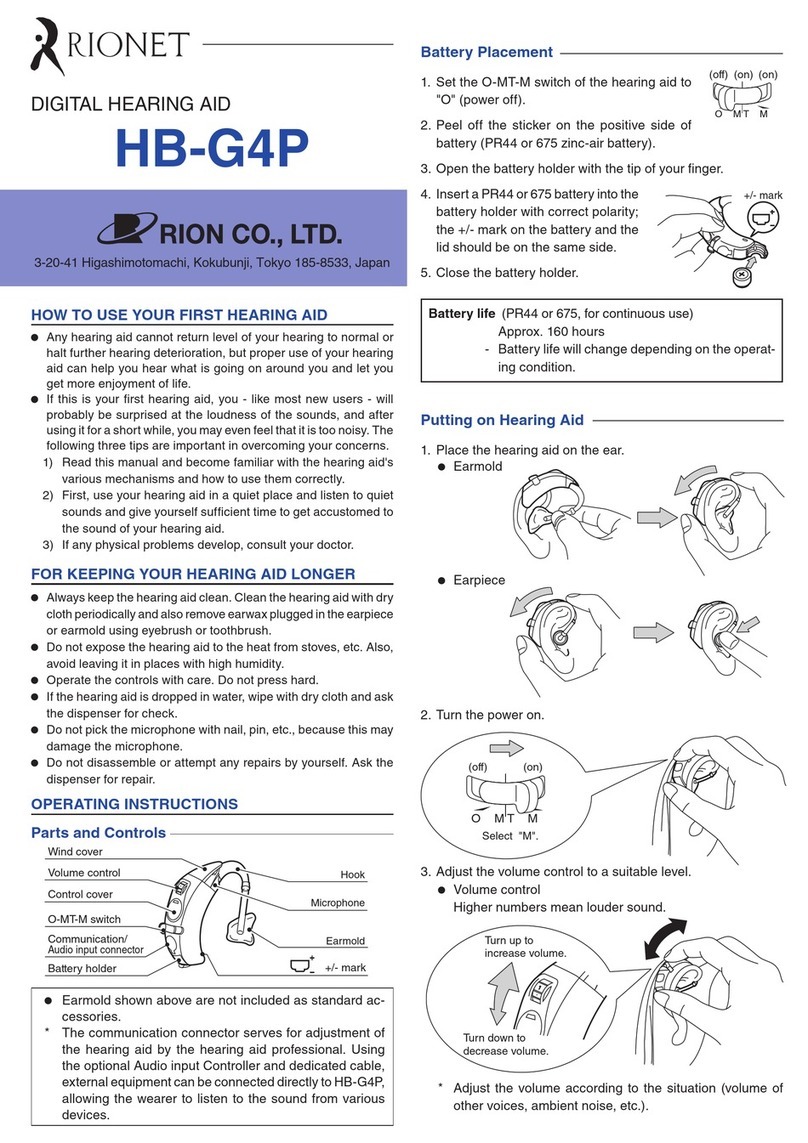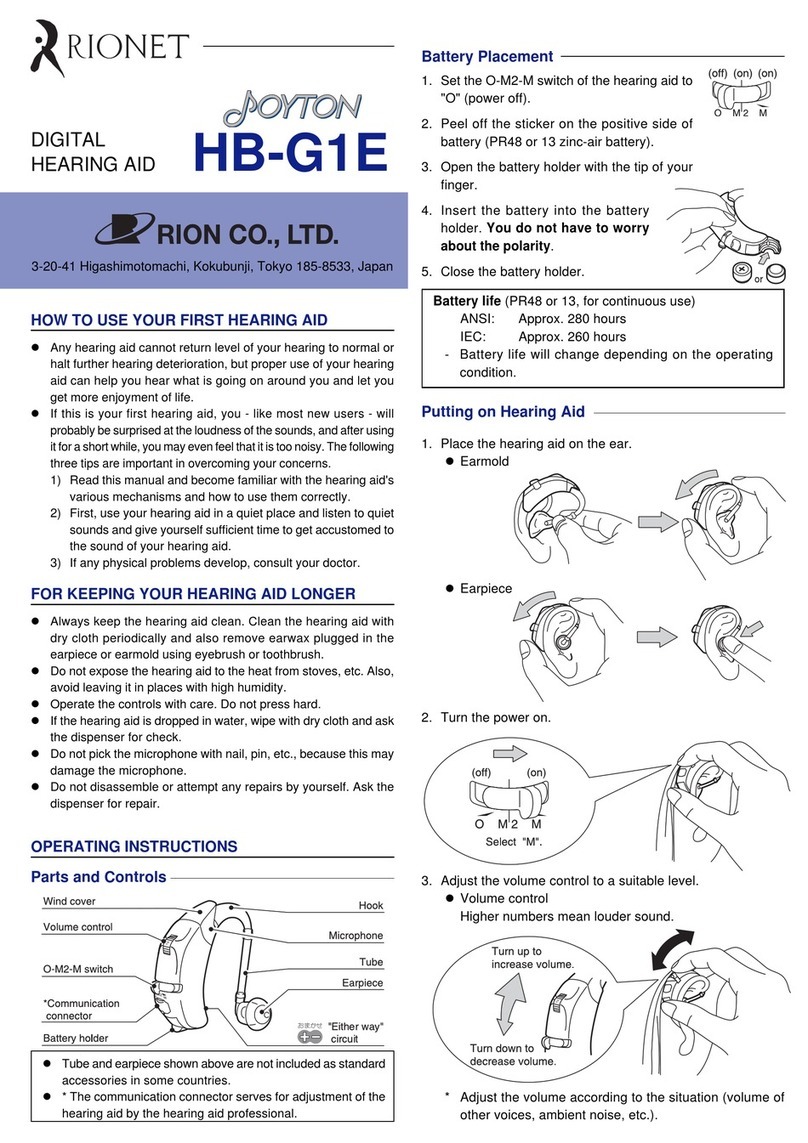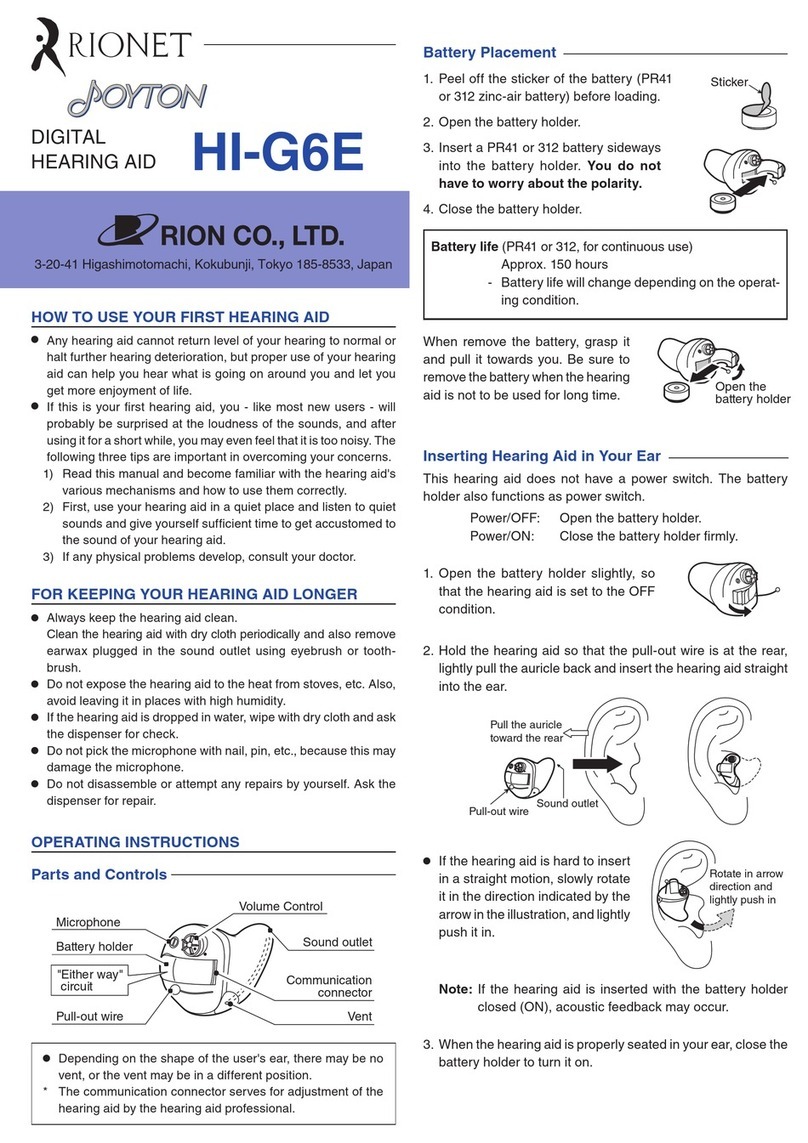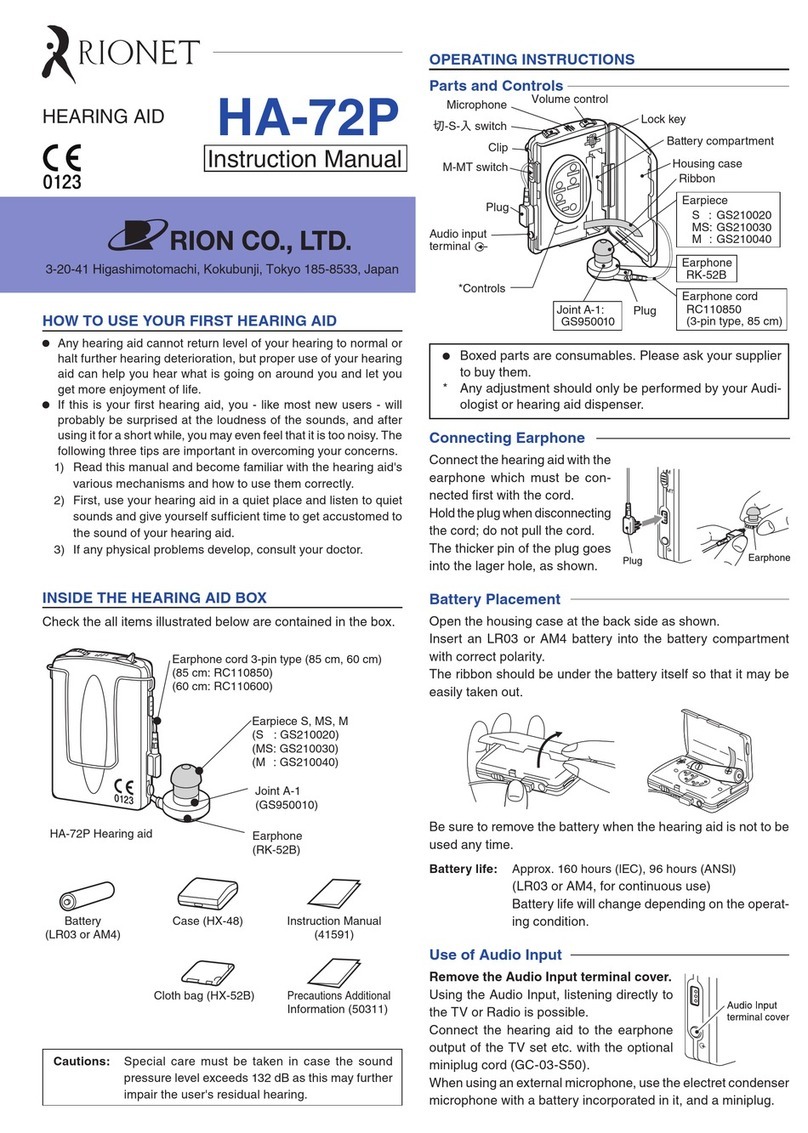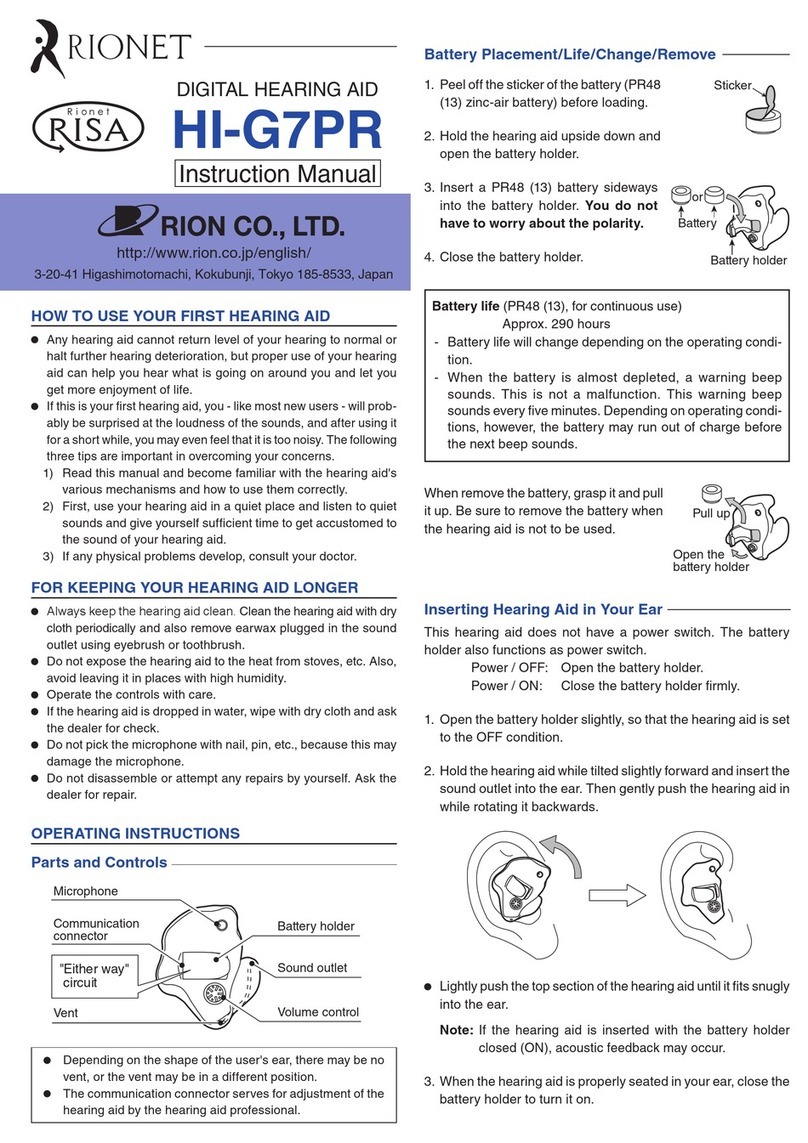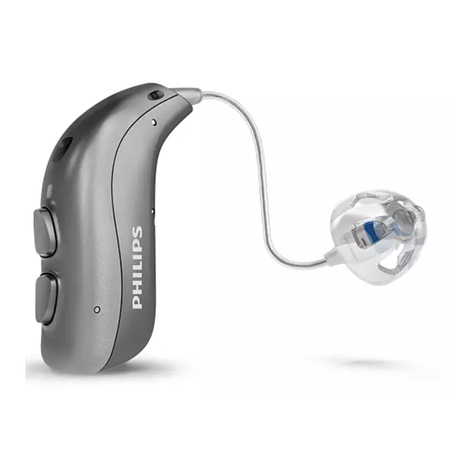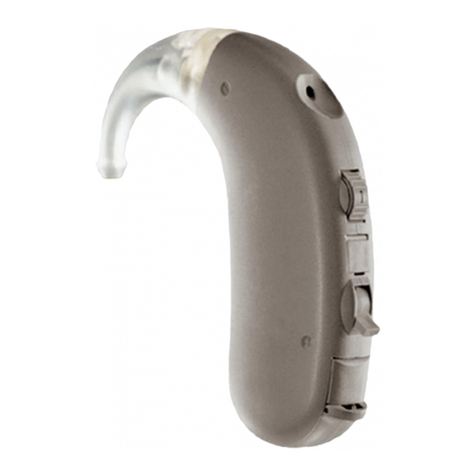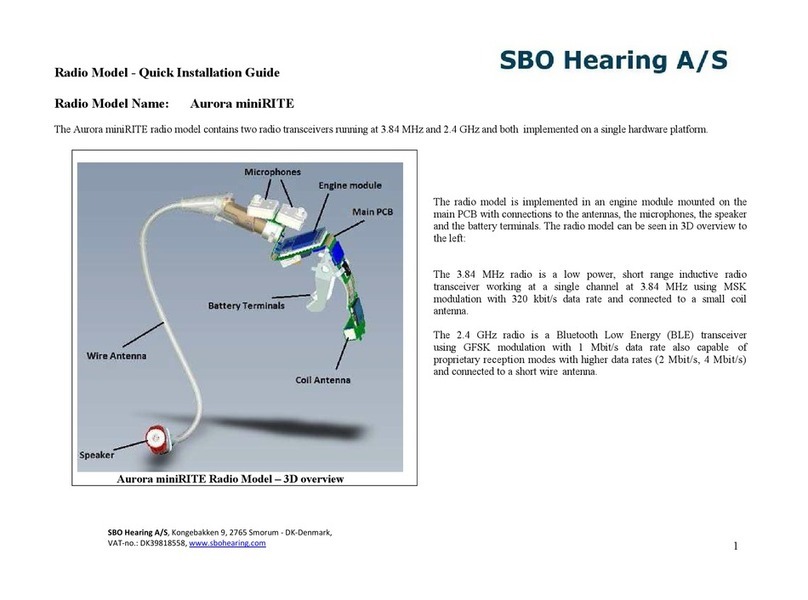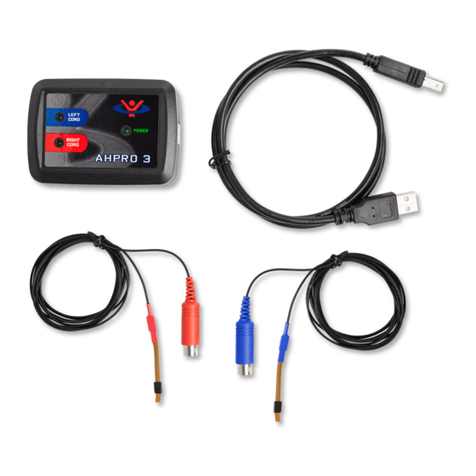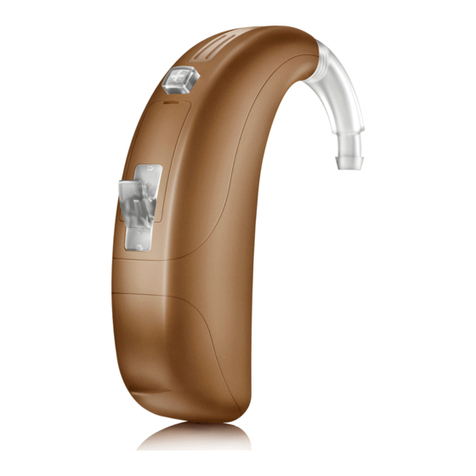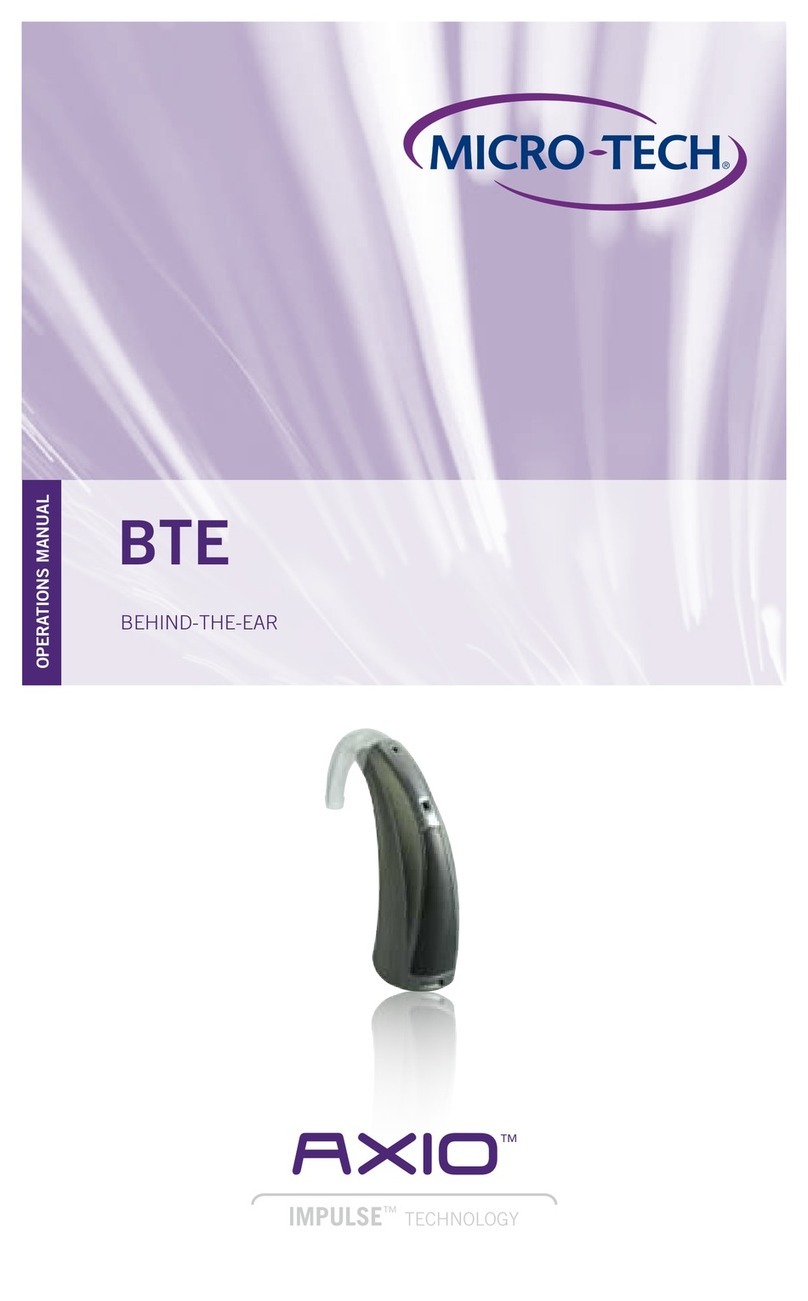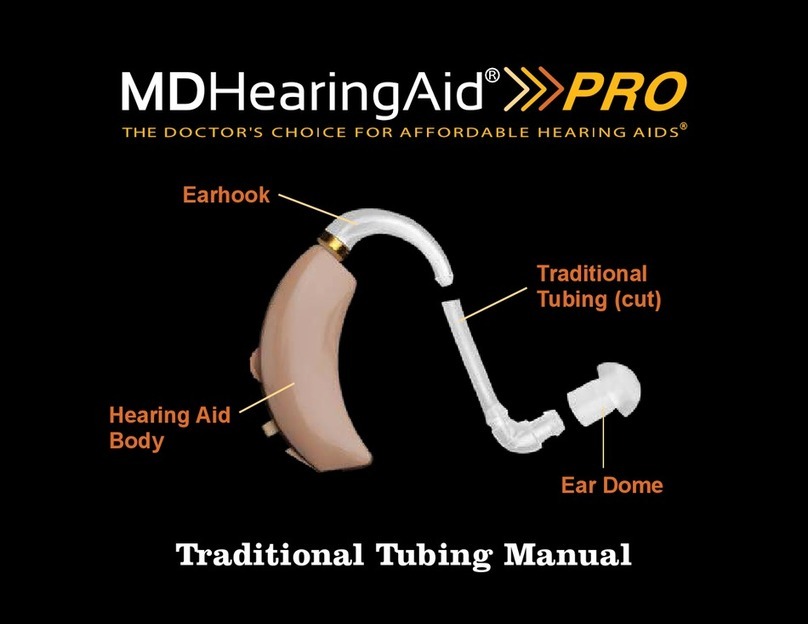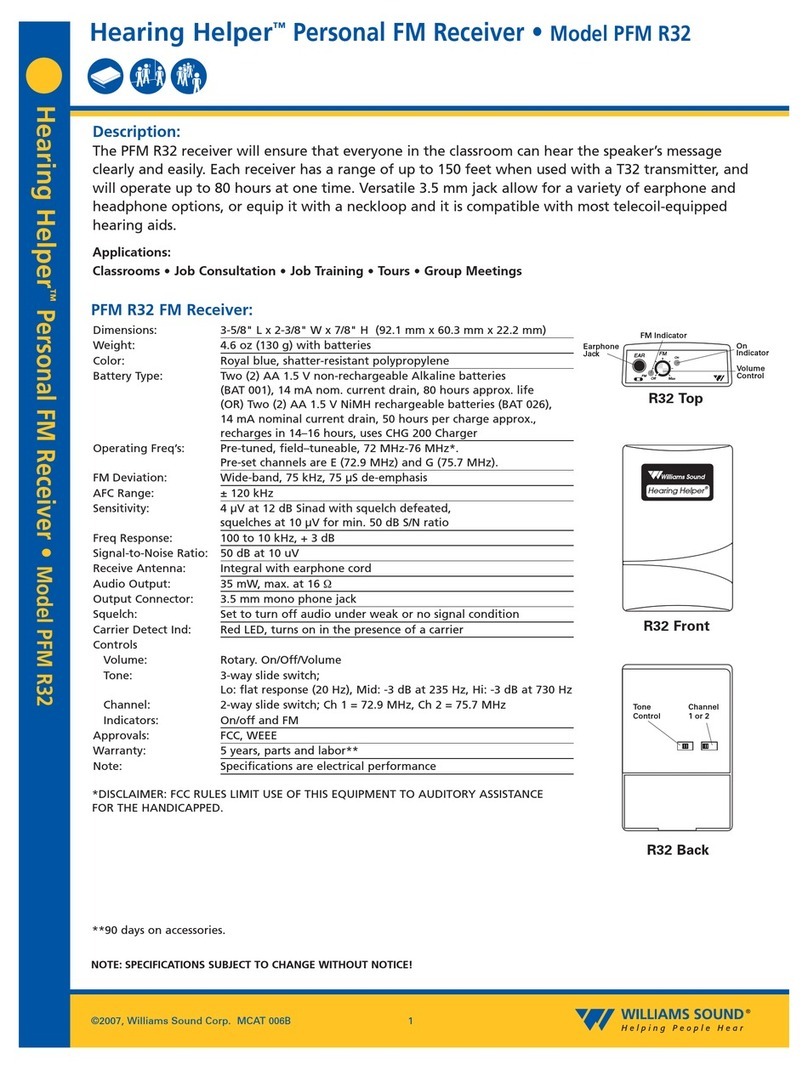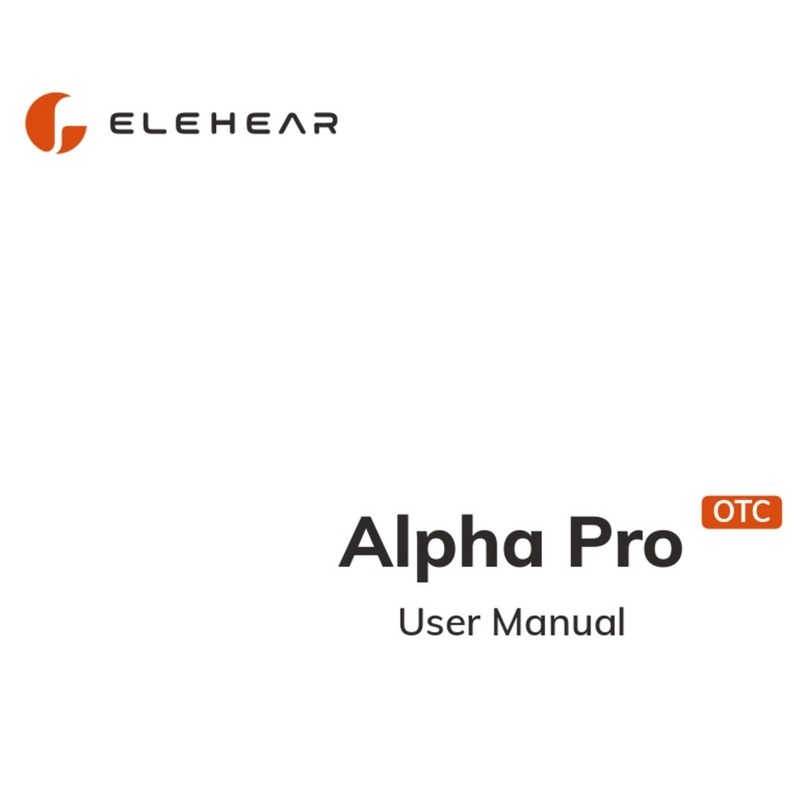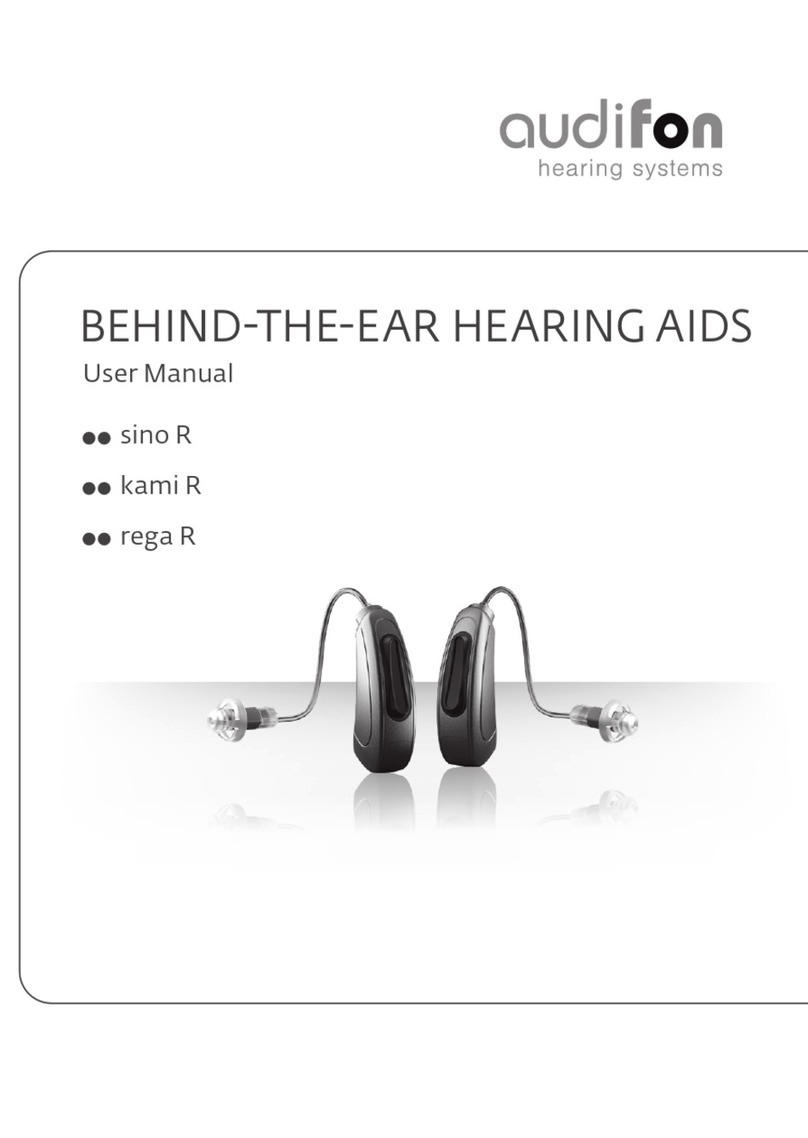
TECHNICAL DATA (According to IEC Standard Pub. 60118 1983)
Reference Test Frequency
1600 Hz
Full-on Acoustic Gain 54 dB
OSPL90 127 dB
500 Hz 121 dB
Peak 131 dB
Equivalent Input Noise Level 26 dB
Total Harmonic Distortion
500 Hz: 28%, 800 Hz: 22%, 1600 Hz: 8%
Induction Coil Sensitivity 79 dB at 1 mA/m (HB-23PT only)
Range of Volume Control 40 dB
Input Switch O-T-M (HB-23PT), O-M (HB-23P)
Output Limiting Control
MOP Control, range 10 dB (HB-23PT only)
Tone Switch
Low Frequency Reduction (HB-23PT only)
Battery Type, Current, Life
PR-48, 1.3 mA, approx. 177 h
Earphone, Microphone Magnetic, Electret Condenser
Dimensions and Weight
3.6 × 1.3 × 0.88 cm, 4.2 g (excluding battery)
(Typical value)
TECHNICAL DATA (According to ANSI Standard S3.22 1987)
Maximum SSPL90 125 dB
HFA-SSPL90 119 dB
HFA-full-on Gain 46 dB
Reference Test Gain 42 dB
Frequency Range 200 Hz to 6000 Hz
Equivalent Input Noise 27 dB
Total Harmonic Distortion 800 Hz: 8%, 1600 Hz: 2%
Induction Coil Sensitivity 84 dB at 10 mA/m (HB-23PT only)
Range of Volume Control 40 dB
Input Switch O-T-M (HB-23PT), O-M (HB-23P)
Output Limiting Control
MOP Control, range 10 dB (HB-23PT only)
Tone Switch
Low Frequency Reduction (HB-23PT only)
Battery Type, Current, Life
13, 1.3 mA, approx. 177 h
Receiver, Microphone Magnetic, Electret Condenser
Dimensions and Weight
3.6 × 1.3 × 0.88 cm, 4.2 g (excluding battery)
(Typical value)
No. 41622 08-01
Basic frequency response
and effect of Tone switch
(HB-23PT)
Induction coil input
characteristics (HB-23PT only)
130
0dB=20µPa
120
110
100
90
80
100 200 500 1000 2000 5000 10000
Output SPL (dB)
1600 2500 Input SPL 60 dB
Frequency (Hz)
TONE: N
TONE: H
1600 2500 Input 10 mA/m
110
0dB=20µPa
100
90
80
70
60
100 200 500 1000 2000 5000 10000
Output SPL (dB)
Frequency (Hz)
SSPL90 frequency response
and effect of MOP control
(HB-23PT)
Full-on gain frequency
response
70
60
50
40
30
20
100 200 500 1000 2000 5000 10000
Frequency (Hz)
Acoustic Gain (dB)
1600 2500 (0dB=20µPa)
Input SPL 60 dB
1600 2500 Input SPL 90 dB
130
0dB=20µPa
120
110
100
90
80
100 200 500 1000 2000 5000 10000
Output SPL (dB)
Frequency (Hz)
MOP
0
-4
-8
-10
Induction coil input
characteristics (HB-23PT only)
130
0dB=20µPa
120
110
100
90
80
100 200 500 1000 2000 5000 10000
Output SPL (dB)
1600 2500 Input SPL 60 dB
Frequency (Hz)
TONE: N
TONE: H
1600 2500 Input 10 mA/m
120
0dB=20µPa
110
100
90
80
70
100 200 500 1000 2000 5000 10000
Output SPL (dB)
Frequency (Hz)
OSPL90 frequency response
and effect of MOP control
(HB-23PT)
Full-on acoustic gain
frequency response
80
70
60
50
40
30
100 200 500 1000 2000 5000 10000
Acoustic Gain (dB)
Frequency (Hz)
1600 2500 (0dB=20µPa)
Input SPL 60 dB
1600 2500 Input SPL 90 dB
140
0dB=20µPa
130
120
110
100
90
100 200 500 1000 2000 5000 10000
Output SPL (dB)
Frequency (Hz)
MOP
0
-4
-8
-10
Basic frequency response and
effect of Tone switch
(HB-23PT)
Response of HB-23P is
equivalent to curve with TONE N.
Response of HB-23P is
equivalent to curve with MOP 0.
Response of HB-23P is
equivalent to curve with TONE N.
Response of HB-23P is equivalent to
curve with MOP 0.
2008
EC
REP
RION CO., LTD.
3-20-41 Higashimotomachi Kokubunji,
Tokyo 185-8533 Japan.
RION CO., LTD. Europe Representative Office
Schaepmanlaan 66 NL-4623 XZ Bergen op Zoom
THE NETHERLANDS
Note:
(1) Production number (serial number) is indicated inside the bat-
tery compartment.
(2) Production year is imprinted at the bottom of the unit.
(3) Manufacturer's name is imprinted at the rear side of the unit.
Volume Control
Adjust the sound volume to the most
comfortable level with the volume con-
trol. The best position of the control will
depend upon the distance and voice of
the person with whom you are talking;
readjustment may be necessary.
When using the hearing aid for the first
time, set the control for a comfortable
level, then reduce the volume slightly.
Increase
Reduce
When you remove the hearing aid from your ear
Set the switch to "O" to power off
and remove the hearing aid from
your ear.
When removing the hearing aid with
the switch setting "M" or "T", acous-
tic feedback (high-pitched sounds)
might be heard.
Set to "O"
OnOff
O T M

